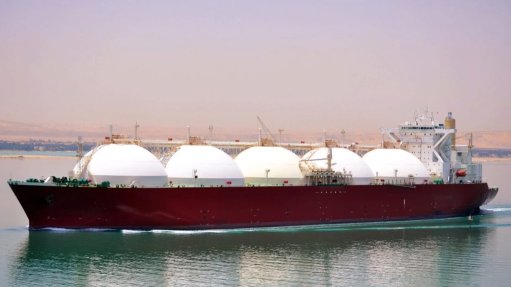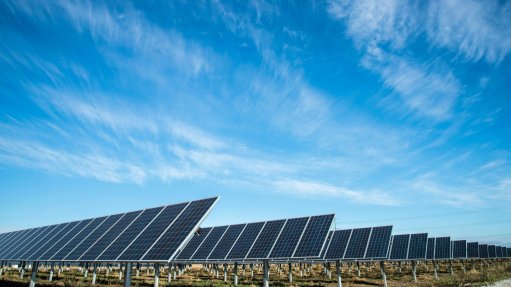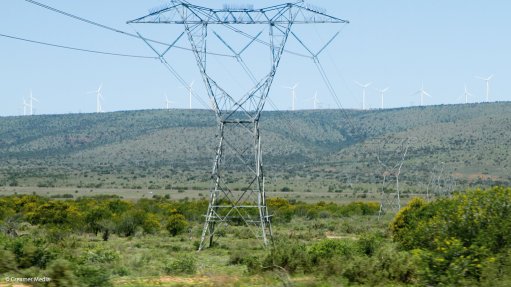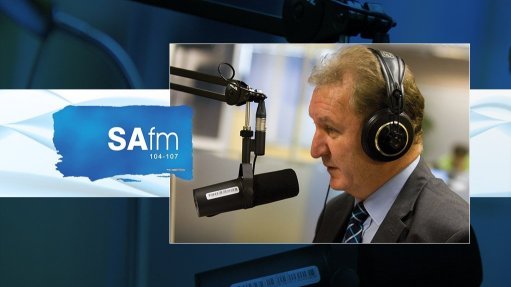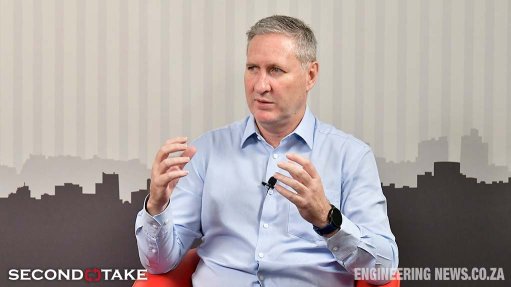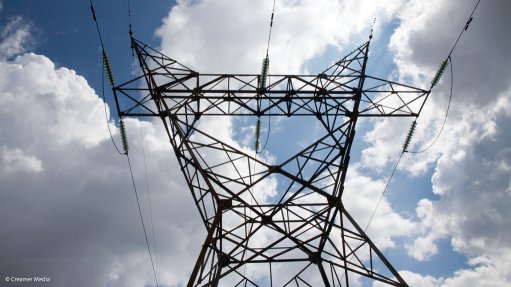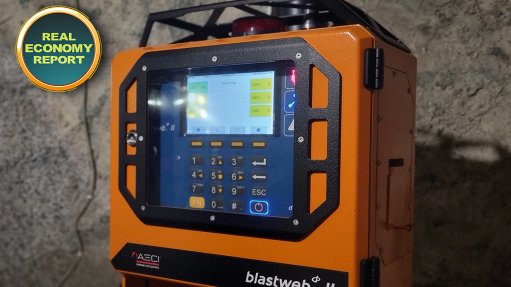Illegal plumbing installations compound SA’s sewage woes

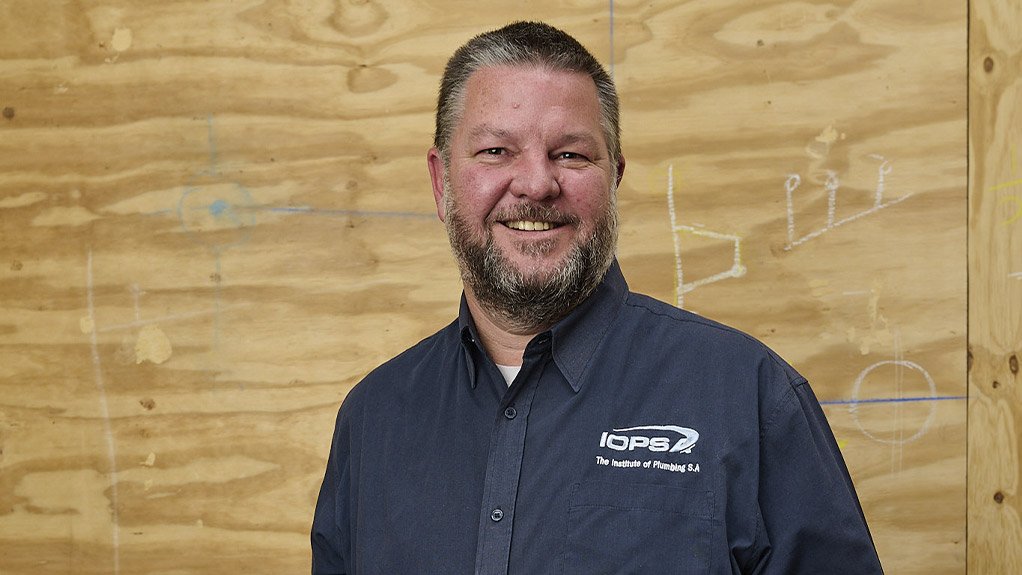
Brendan Reynolds, Executive Director of the Institute of Plumbing South Africa (IOPSA)
This article has been supplied.
It is estimated that about 5-billion litres of raw sewage enter our freshwater resources on a daily basis. While a large portion of this sewage is from dysfunctional wastewater-treatment plants (WWTPs) with only 2% of these facilities operating at optimal levels, illegal plumbing installations are exacerbating the situation, which can be described as a national crisis.
“As plumbers, we still see many property owners, including homeowners, businesses and industrial operations, discharging rainwater into sewers. This is despite it being illegal to do so. The National Building Regulations clearly state that no person will allow sewage, effluent or any other objectionable materials to enter the watercourse. Most of the municipal bylaws also prohibit the practice of discharging rainwater into sewer systems so there is no ambiguity around the illegality of this practice,” Brendan Reynolds, Executive Director of the Institute of Plumbing South Africa (IOPSA), says. IOPSA is the official mouthpiece of the professional plumbing industry with a strong membership consisting of many qualified plumbers.
As part of ongoing research, IOPSA inspected about 140 houses in an undisclosed Gauteng suburb to determine the extent of illegal discharging of rainwater into sewer systems in the country. Worryingly, between 30% and 40% of the houses examined by IOPSA directed rainwater into the sewer system, with many of the property owners unaware that they were on the wrong side of the law. It is a practice that is especially prevalent in new townhouse complexes where property developers, architects, or contractors lead downpipes into the sewer to remove rainwater from courtyards. This is a lot of rainwater that is being discharged into sewer systems, especially during the recent heavy rains that the country has been experiencing. Gauteng lately received between 50 mm and 100 mm of rain. Under these conditions, a house with a 10m x 10m roof structure will discharge 5 000l to 10 000l of rainwater from its downpipes. Complexes, factories and commercial premises discharge significantly more rainwater. A large building with a 50m x 50m roof structure, for example, is capable of discharging as much as 25 000l of rainwater when there is 10mm of rainfall. This is enough water to fill five 5 000l water tanks in a matter of minutes.
Considering the findings of IOPSA’s research on the percentage of houses that comply with the law, one suburb consisting of about 1 000 houses can potentially discharge more than a million litres of rainwater into our sewer systems.
Raw sewage flowing out of open manholes are a common occurrence in many suburbs of the country during storms. This is because the sewer pipes have been filled to the maximum capacity for extended periods. Never designed to handle these types of loads, they are being placed under extraordinary pressure. This potentially damages the municipal
infrastructure, including the manhole covers when they burst open. There have also been many instances where raw sewage has flowed onto properties and into houses causing severe harm.
However, the biggest risk posed by this raw sewage is when it drains into natural watercourses and eventually finds its way into the country’s rivers, dams, WWTPs and oceans. The Hennops and Jukskei Rivers, as well as the Vaal Dam, for example, have been heavily polluted with sewage as a result of the situation. Meanwhile, beaches in KwaZulu-Natal have had to close for extended periods during peak holiday seasons on several occasions due to high levels of E. coli in the oceans. Posing a severe health risk, E. coli is always a strong indication of sewage or animal waste contamination. Having to close the beaches to the public due to high levels of E. coli also has a large negative impact on the province’s tourism industry, in addition to its potential impact on the health of communities that reside within the vicinity of the contaminated water body.
According to a study undertaken in 2013, 18 of the country’s 25 major rivers and one in five dams had undergone a process of eutrophication. This is when freshwater resources are enriched with effluent in the same way that agricultural dams do when they are exposed to nutrients. It can be expected that the situation has worsened over the past decade as most of our freshwater resources are vulnerable to this type of degradation under the current scenario. The Hartbeespoort Dam, which is used as both an irrigation source by farmers in the region and water activities by holidaymakers, is one of the country’s freshwater sources that has undergone eutrophication. With the water being rich in nutrients but low in oxygen, a heavy deep blue and green coloured algae has spread throughout the dam and generating cyanobacterial toxins. They can poison domestic and wild animals that drink the polluted water. Among those who have been impacted the most by the contamination of our freshwater resources in this manner are the many poor and vulnerable South African citizens. They are very reliant on our rivers and dams to sustain themselves. These freshwater sources supply fish, irrigation water for subsistence crops and drinking water for livestock, among other needs. Meanwhile, they are also potentially coming into contact with very harmful toxins.
Cleaning these contaminated freshwater sources is also an expensive and onerous undertaking. These resources could rather be spent surmounting many of the pressing socio-economic challenges that the country is currently facing.
Leading to a significant loss in biodiversity, eutrophication also has a significant negative impact on the environment. “According to the findings of an earlier study undertaken by environmental scientists, a 3km long section of the Hennops River between Irene and
Centurion is devoid of any lifeform because it is contaminated by effluent. However, this degradation is not confined to the water body, alone. It starts to spread from the river system into the surrounding ecology. For example, many trees have died along the banks of the contaminated Vaal River. It also leads to water-borne diseases, such as diarrhoea and cholera, threatening entire communities and resulting in a significant decline in the value of properties located close to the contaminated freshwater systems,” Reynolds says.
Major strain is also placed on the country’s WWTPs, which require additional resources to treat the water to a drinkable standard. At the same time, this contaminated water causes significant harm to the infrastructure and interrupts the entire treatment system. For example, it damages valves and kills natural bacteria that helps to treat the water. South Africa’s service delivery infrastructure is already in a worrying state, and this is only compounding the problem. It is estimated that it will cost R900-billion to repair the country’s ailing critical infrastructure assets, including WWTPs.
Another significant risk is the increased spread of “super bugs”, which are bacteria, viruses, parasites and fungi that are resistant to most antibiotics and other medications that are commonly used to treat infections. WWTPs are unable to treat all waste in the water that they receive. While chlorine eliminates the weaker bacteria, viruses, parasites and fungi, the stronger variety survive and strengthen. They are usually spread in hospitals and clinics. At present, partially metabolised medications, chemicals and detergents, among others, are being flushed down toilets and then mixing with human sewage and industrial effluent to create deadly cocktails. Leading scientists have expressed concern about the yet unknown risk of pathogens mixing with many different types of chemicals, industrial waste and other elements that are supposed to be contained in the sewer system, but are now ending up in rivers, streams and dams.
“Professional plumbers can help arrest the situation. This is by ensuring that we are always complying with laws and regulations on all of our projects to safeguard against raw sewage entering the country’s natural water courses. When we see downpipes being directed into sewers on premises, we should have the strength and conviction to speak up and propose alternatives, such as rainwater harvesting and subsoil drainage, to property owners. As professionals, we need to be willing to do the right thing for the community, ourselves and our families. We strongly encourage all homeowners to use the services of a properly qualified plumber to ensure that you stay on the right side of the law and help protect our vulnerable fresh water resources.” Reynolds concludes.
Comments
Press Office
Announcements
What's On
Subscribe to improve your user experience...
Option 1 (equivalent of R125 a month):
Receive a weekly copy of Creamer Media's Engineering News & Mining Weekly magazine
(print copy for those in South Africa and e-magazine for those outside of South Africa)
Receive daily email newsletters
Access to full search results
Access archive of magazine back copies
Access to Projects in Progress
Access to ONE Research Report of your choice in PDF format
Option 2 (equivalent of R375 a month):
All benefits from Option 1
PLUS
Access to Creamer Media's Research Channel Africa for ALL Research Reports, in PDF format, on various industrial and mining sectors
including Electricity; Water; Energy Transition; Hydrogen; Roads, Rail and Ports; Coal; Gold; Platinum; Battery Metals; etc.
Already a subscriber?
Forgotten your password?
Receive weekly copy of Creamer Media's Engineering News & Mining Weekly magazine (print copy for those in South Africa and e-magazine for those outside of South Africa)
➕
Recieve daily email newsletters
➕
Access to full search results
➕
Access archive of magazine back copies
➕
Access to Projects in Progress
➕
Access to ONE Research Report of your choice in PDF format
RESEARCH CHANNEL AFRICA
R4500 (equivalent of R375 a month)
SUBSCRIBEAll benefits from Option 1
➕
Access to Creamer Media's Research Channel Africa for ALL Research Reports on various industrial and mining sectors, in PDF format, including on:
Electricity
➕
Water
➕
Energy Transition
➕
Hydrogen
➕
Roads, Rail and Ports
➕
Coal
➕
Gold
➕
Platinum
➕
Battery Metals
➕
etc.
Receive all benefits from Option 1 or Option 2 delivered to numerous people at your company
➕
Multiple User names and Passwords for simultaneous log-ins
➕
Intranet integration access to all in your organisation






